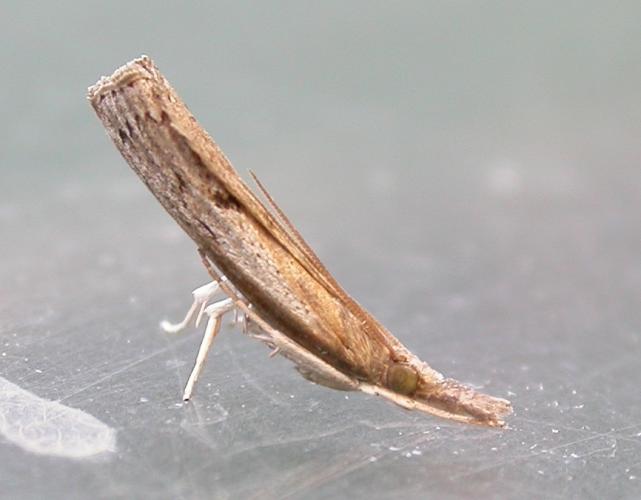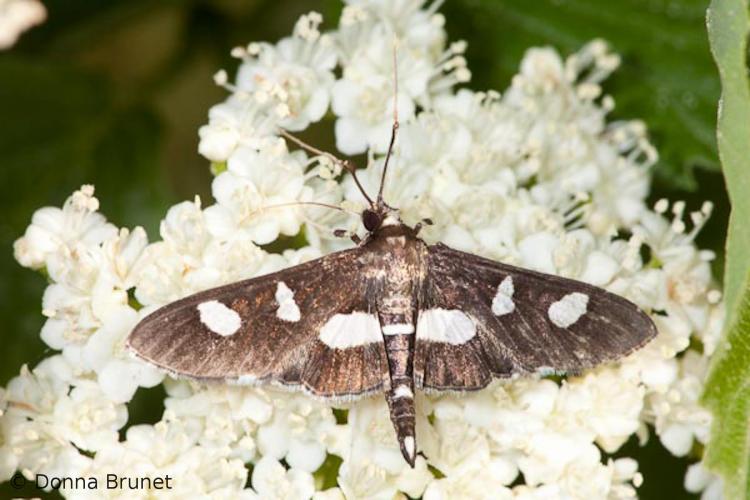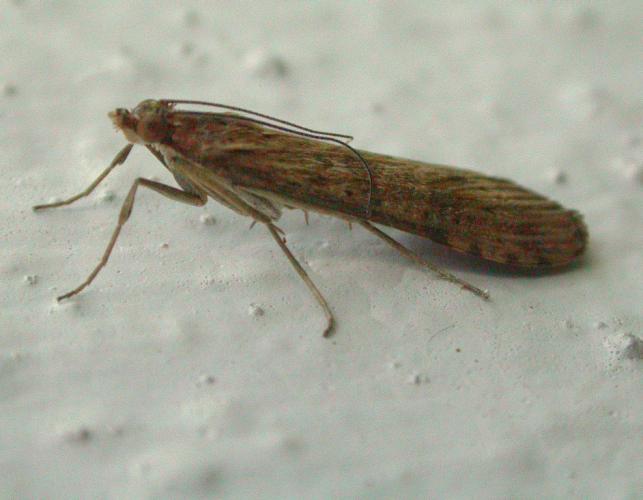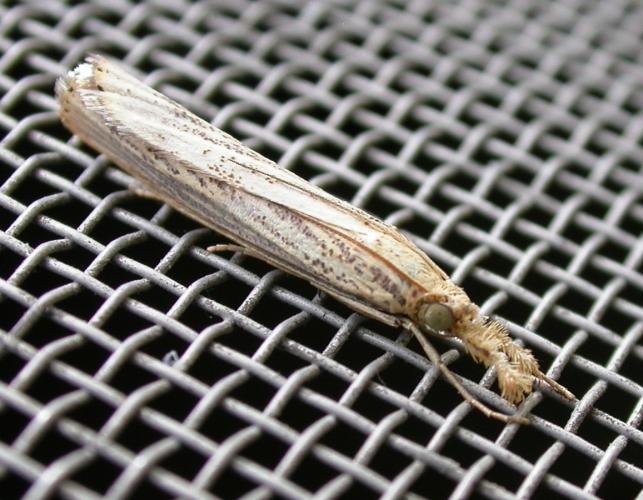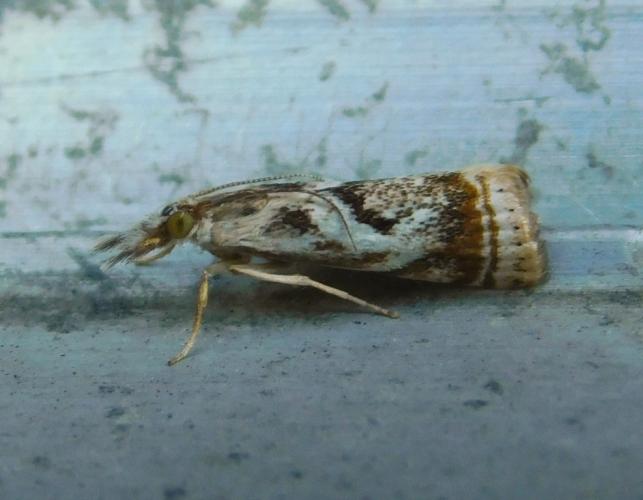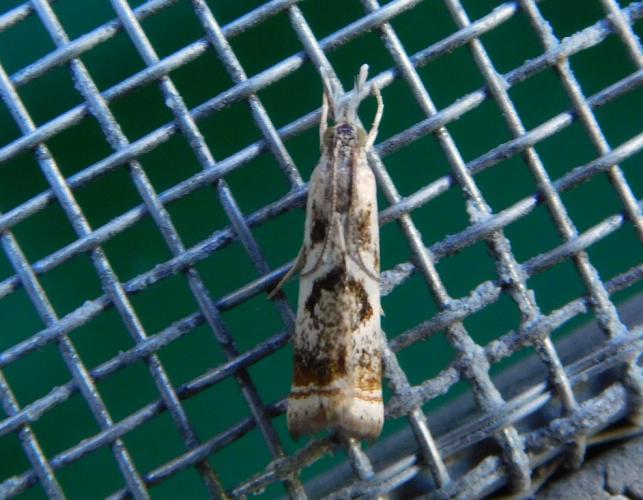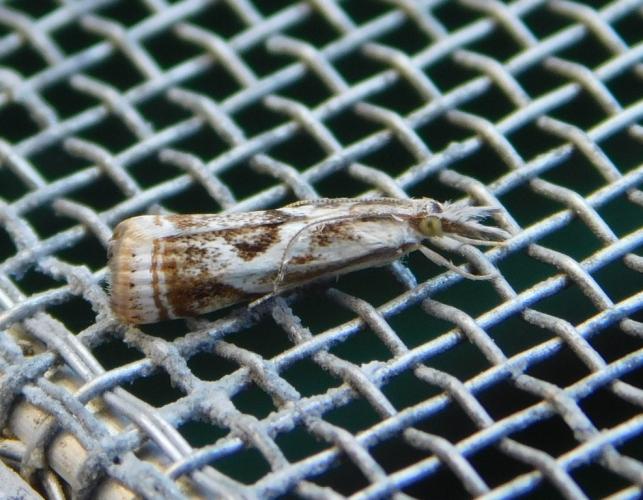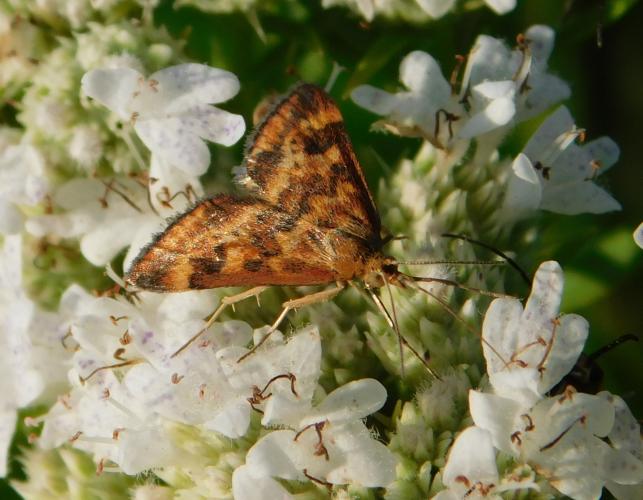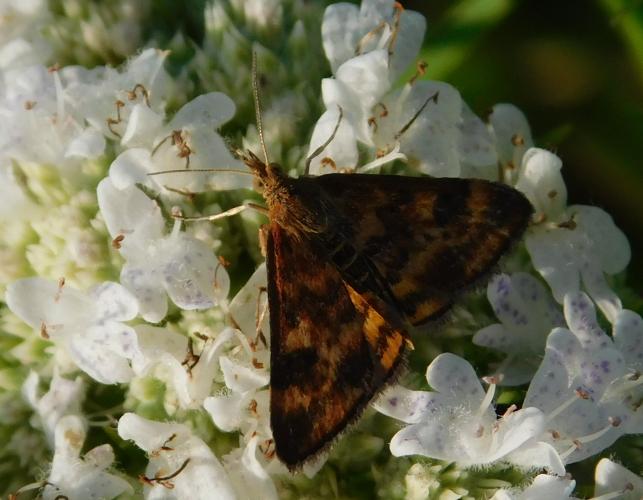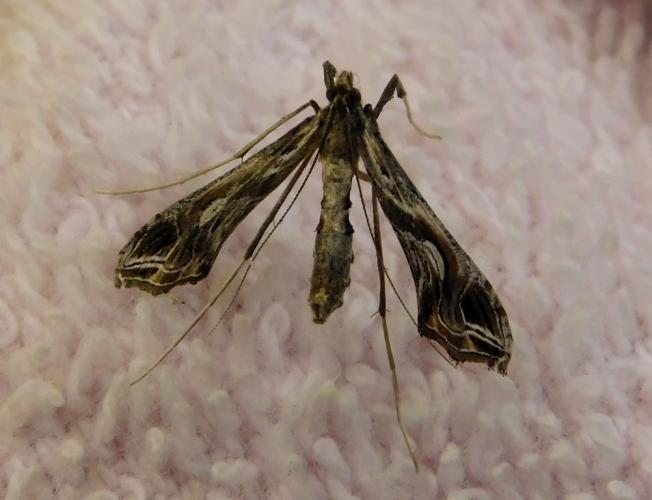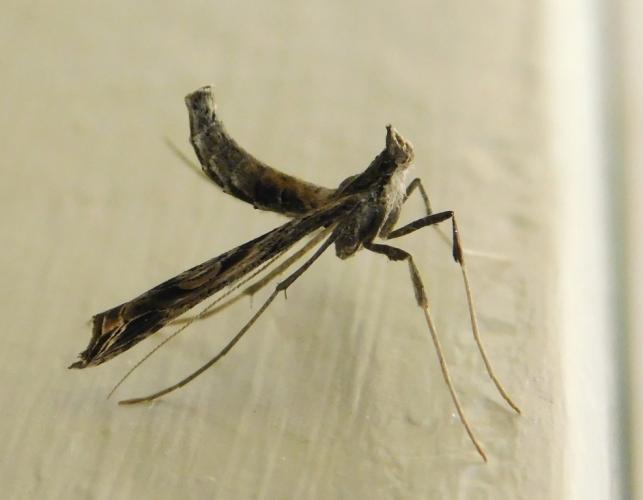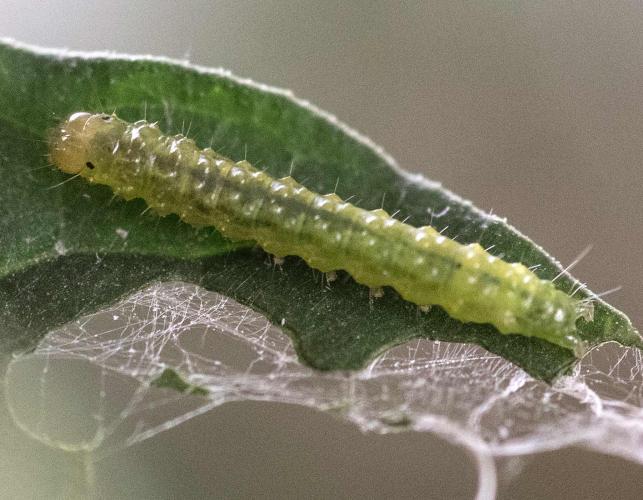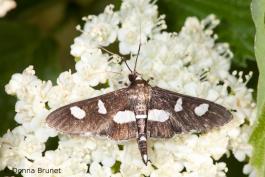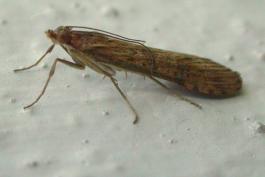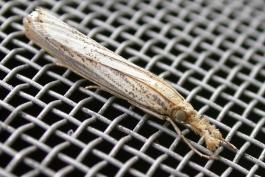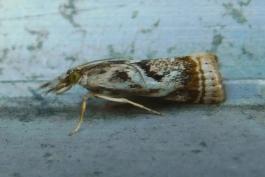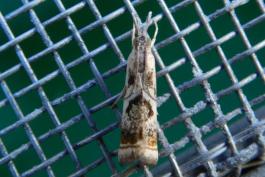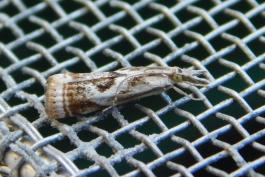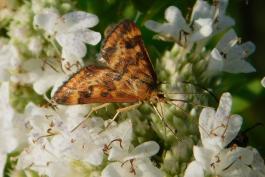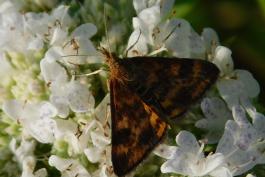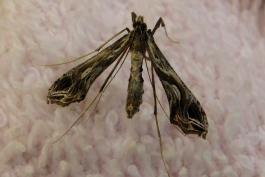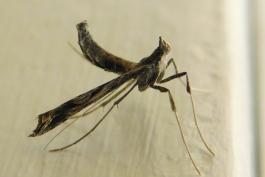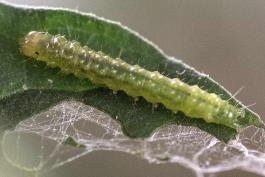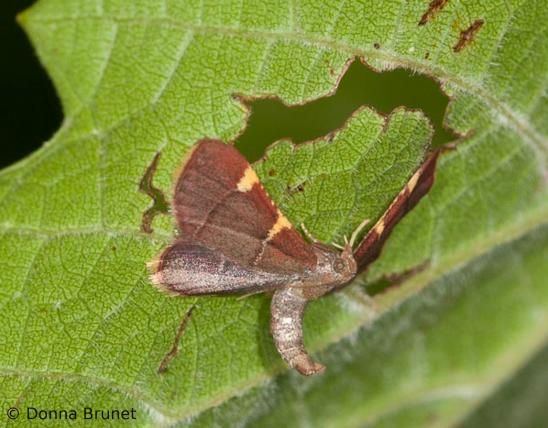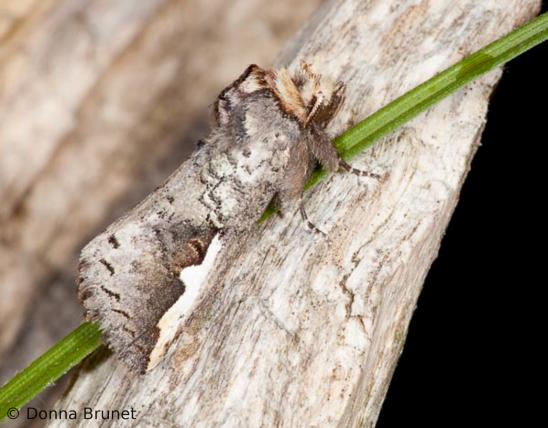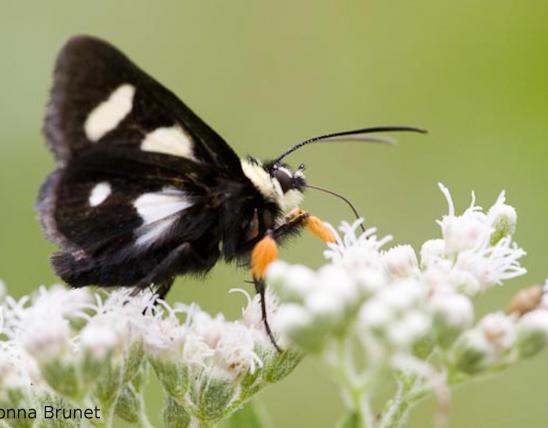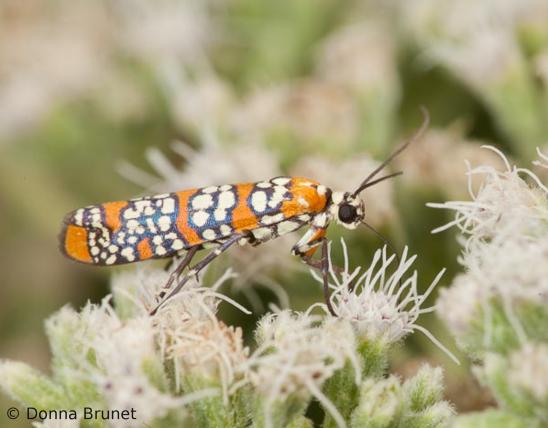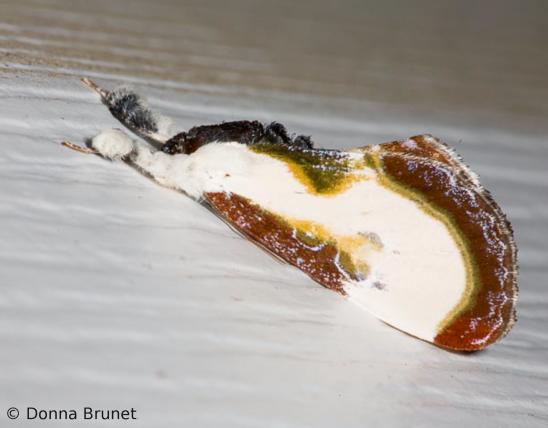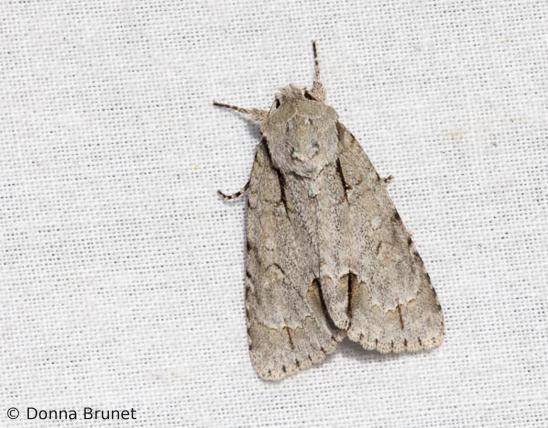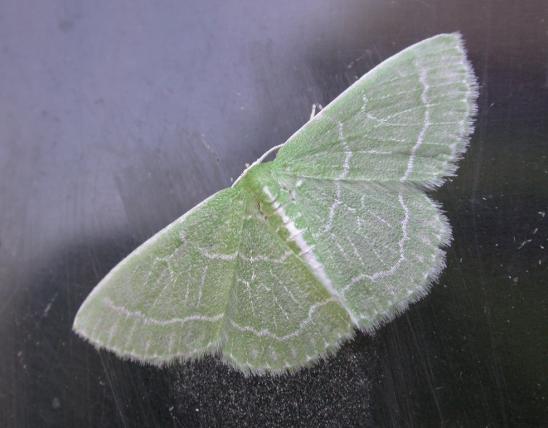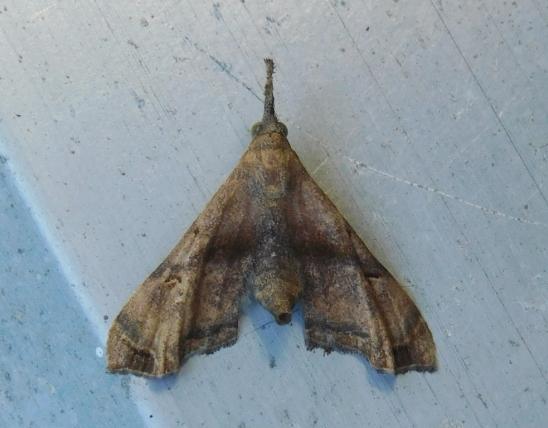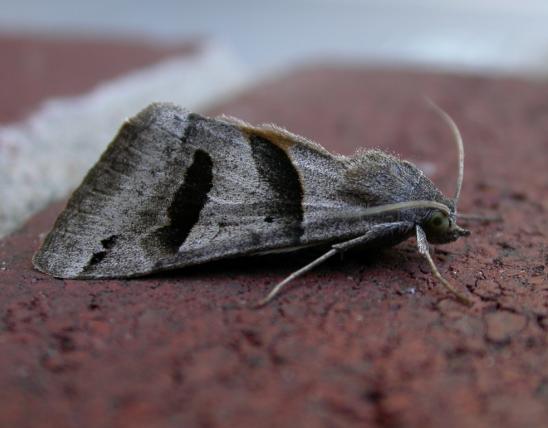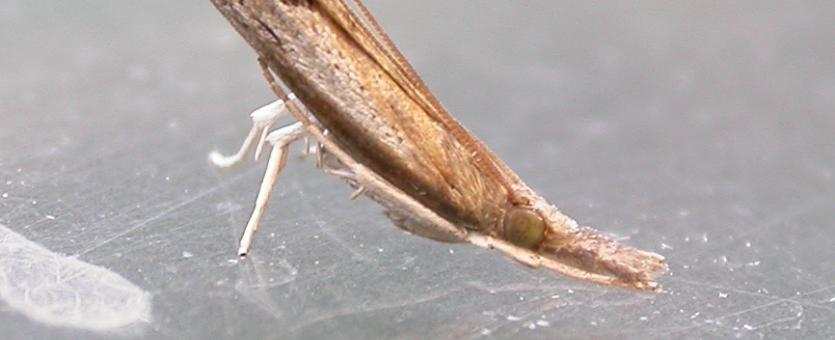
Snout moths are named for mouthparts (palpi) that project outward like a snout. Species in the crambid snout moth family can be difficult to separate from members of the pyralid family. Many crambid species may be distinguished by learning some easily recognizable wing patterns. Members of both families have scales on the base of the proboscis. Labial palps (fingerlike projections by the mouth) either project forward or curve upward and may be long enough to curve over the top of the head. The overall shape of a resting crambid, including wings, varies from long and thin to appearing as a wide triangle. Some species adopt a characteristic posture of curving the abdomen up toward the head; in other species, the tip of the abdomen extends past the margin of the hindwing.
Most crambids are drab shades of tan, gray, beige, white, or dark brown, with mottled markings, blotches, lines, or spots. Some species are marked with pink, orange, yellow, or other pretty colors, or have bold spots, bands, or other markings, but they are not the majority.
Caterpillars in this group of rather small moths are small and usually overlooked, being green, tan, or brown with camouflage markings, sometimes striped or banded, sometimes with short, sparse hairs. Several are aquatic or spend most of their time concealed in leaf shelters or boring within plant stalks or underground feeding on roots.
Wingspan: ½ to 1½ inches
Statewide.
Habitat and Conservation
A widespread, global family, crambid snout moths may be found nearly anywhere. Like other moths, the adults are often located near the places where eggs are laid and where caterpillars develop. Crambid caterpillars have a variety of lifestyles, feeding on a variety of grasses and other nonwoody plants, and they may feed externally on leaves or as internal borers. Some produce silk tubes as refuges. Crambidae also includes some unusual aquatic caterpillars that use silk webs to hold themselves in place while feeding on algae in rapidly moving water. In quieter waters, other crambid species construct leaf and silk tubes as refuges while feeding on aquatic plants such as duckweed. Gills enable the caterpillars to breathe underwater.
Food
Larval foods vary greatly by species. Many species are aquatic as caterpillars, eating the leaves and stems of pondweeds, water lilies, or duckweeds. Some crambid caterpillars are stem borers or leaf miners. Some feed on plant roots underground. Some tie leaves together, as described under “Habitat” above.
Status
Crambid snout moths were originally included in family Pyralidae, but they were separated into their own family based on the structure of their tympanal (earlike) organs and other characteristics. The pyralids and crambids are huge groups of moths that can be very difficult to identify.
Life Cycle
Like other moths, crambids begin life as an egg, then hatch and progress through a series of caterpillar stages before pupating and emerging as a winged, sexually mature adult. The different species overwinter at different stages of the life cycle, and the number of broods per year varies, too.
Human Connections
Because the caterpillars of many crambid species specialize in eating the stems of grass plants, that means they can cause problems for the many crop species that are grasses: corn, oats, rice, sugarcane, and more. The European corn borer is an example.
The crambids include several other agricultural or landscaping pests, including grass sod webworms, bean pod borers, and the grape leaffolder.
Meanwhile, other crambid species help people by serving as biological controls of invasive plant species. The water hyacinth moth, native to the Amazon basin, was imported to North America, where it helps control the overgrowth of water hyacinth, also imported from the Amazon. Another crambid, called the water veneer, helps control invasive Eurasian water milfoil.
One crambid, the bamboo borer, is eaten as a high-protein delicacy by people in parts of Thailand, Laos, Myanmar, and China. They are sometimes called rot duan (“express train”) for their streamlined trainlike shape. In Thailand, people shrug off the Western bias against “eating bugs” and are farming them profitably and sustainably. The “bamboo worms” are deep-fried and flavored up with spices, herbs, and sauces.
Ecosystem Connections
Apart from the species that are crop pests, most crambids make their living by eating native plants and play a role in the balance of nature. Many types of birds, mammals, reptiles, amphibians, fish, and predatory insects, spiders, and crayfish all hunt for animals such as crambid caterpillars. Boring in stems and crafting silken shelters helps the caterpillars hide from their many predators. Defenseless crambid eggs and pupae are preyed upon, as well.
The earlike tympanal organs of adult crambid moths are an adaptation that probably help them detect the approach of predators. In most moths, bats are the archenemy, and the tympanal organs help the moths hear the sonar clicks of hunting bats and take evasive action.
